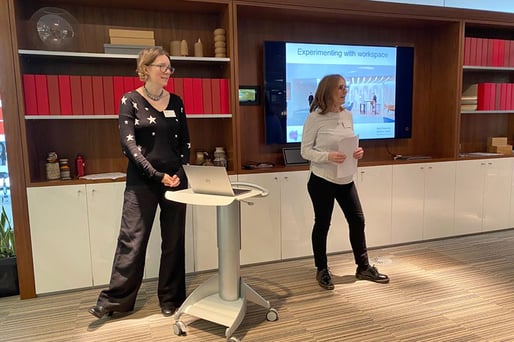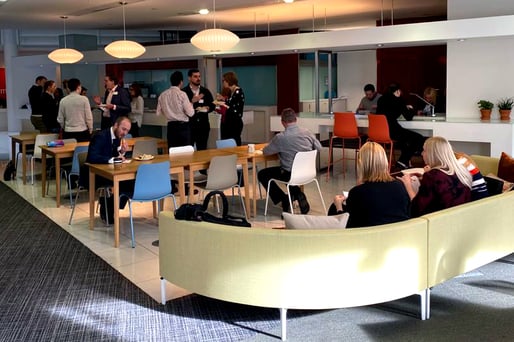|
“How do people choose space” asked Brainybirdz co-Founder Dr Kerstin Sailer. Talking to a small group located within the Herman Miller National Design Centre, Kerstin and fellow co-Founder Ros Pomeroy wanted to use the audience as a live experiment regarding how individuals select their workspace.
Kerstin and Ros are workplace scientists, specialising in the understanding of the interplay between spatial design and organisational behaviour in working environments. On a bright chilly day – Valentine’s Day, no less – Kerstin and Ros delved into what it is that makes us love our working environment. Kerstin began by handing out a floor plan of Herman Miller’s showroom, which had a variety of different workstations: meeting booths, enclosed spaces, traditional table and chairs, and seating areas hidden from the open-plan view. One paired up with a stranger, we were told to explore the ground floor and mark the route we took, placing a yellow dot on the three preferred areas we’d choose to work in for “collaborative work”. Kerstin did not confirm the type of work, simply that it would be collaborative. After 10 minutes we returned, handing in our anonymous worksheets for Ros to evaluate the data. Kerstin’s next task asked the following:
 |
Our pair chose a soft meeting booth, with high backed walls that meant we were enclosed on 3 sides, but had a large enough table so that you could comfortable fit 5 people around it. The words we chose were: comfortable, inviting, flexible, collaborative and spacious. Once back in the seminar room, Kerstin and Ros shared their insight from the first task. It transpired that when leaving the seminar, 22% of people turned left to explore the showroom, whereas a staggering 78% of people turned right. When asked why, people suggested that because they knew left led back to reception, right seemed like the natural path to analyse the rest of the space. In turning right, you were met with floor to ceiling windows letting in natural daylight and a view of the hustle and bustle outside. There were also lush green plants dotted throughout the right side of the room. Kerstin and Ros explained that how we think about space is very people-centric. Space syntax and spatial elements determine where you walk within a building, as demonstrated by the majority of the room choosing to turn right. What’s more, spatial networks affect face to face connection. When asked for feedback on why each pair selected a certain area, the answers included that they were “comfortable”, “private”, “had different type of furniture”, “had dim lighting” and that they felt “connected, but separate”.
|
